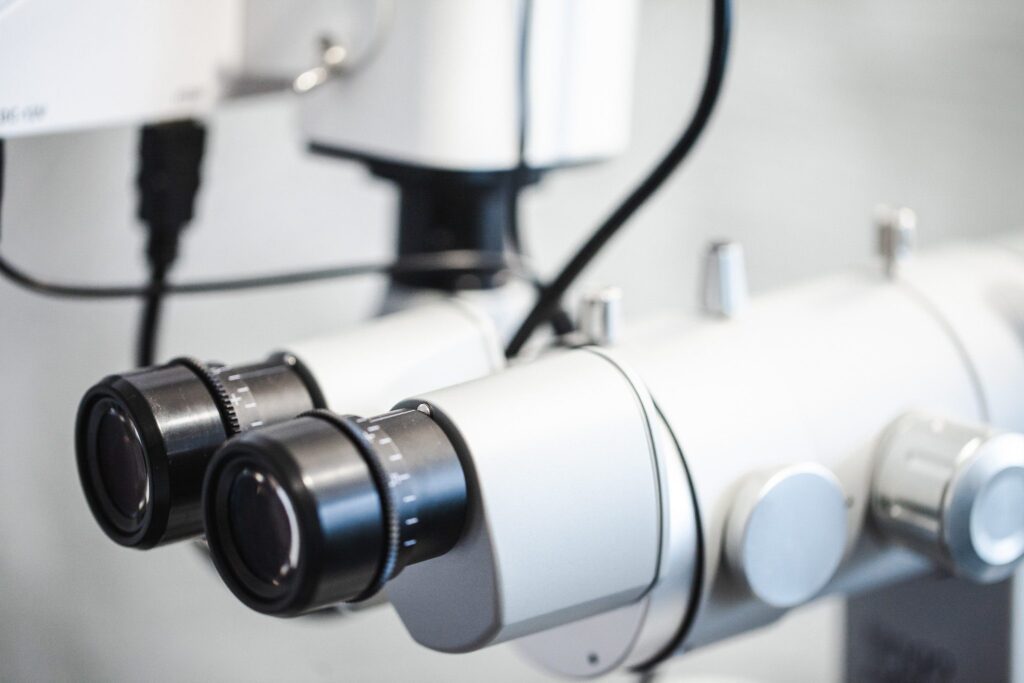Laser vitreolysis is also known as floater laser. Behind this is a gentle, low-risk and painless laser treatment that can be used to remove vitreous opacities (floaters). The special feature here is that work is done without touching the eye. This has the advantage for you that you can leave the practice after the short and outpatient treatment without any disturbing visual impairment. At BeyondEye, we have many years of experience in this field and are pleased to be able to treat them with laser vitreolysis.
Experts in our field
By the way, for laser vitreolysis, you are in the best hands at BeyondEye! Doctor-medic Roxana Fulga was one of the first in Germany to specialize in and perfect these treatments. In addition, Doctor-medic Roxana Fulga delivered the first vitreolysis course at the Academy of American Ophthalmic Surgeons (AAO) Congress in Chicago, USA, in October 2018. In this video, you can watch an impressive 2019 lecture by Doctor-medic Roxana Fulga at the Innovation Symposium.
Before laser vitreolysis, your eye is locally anesthetized and the pupil is dilated with eye drops. Now the laser treatment takes place. The aim is to destroy the so-called floaters by directing extremely short laser light pulses at them via a special contact glass. The laser light pulses break up the floaters and dissolve them. Laser vitreolysis is also used for the so-called white-ring floaters. Tissue strands are cut and tissue compaction (shadows) can be eliminated. The treatment is therefore a gentle, highly precise method whose goal, when successfully performed, is the reduction or complete elimination of disturbing visual field shadows. Laser vitreolysis is performed on an outpatient basis and usually takes about 20 to 30 minutes.

Vitreolysis treatment aims to dissolve vitreous opacities through the laser pulse. Sometimes it takes a while before the result is clearly perceived. After treatment, patients may initially notice small black spots. These are gas bubbles, which usually dissolve gradually on their own. Since your pupil must be dilated with eye drops for the laser treatment, you must not drive for approximately four hours after the treatment. Otherwise, you can go about your daily life as normal.
Depending on the number and size of vitreous opacities, multiple treatment sessions for laser vitreolysis may be required. The required number of laser treatments depends on the size and location of the floater in the vitreous.
The eye may be red or irritated after laser vitreolysis. In this case, we will prescribe anti-inflammatory eye drops. In rare cases, lens opacification or an increase in intraocular pressure may occur after treatment. Good aftercare is therefore very important and is a top priority at BeyondEye.
Now conveniently online or by phone at 0221/87 10 50 to make an appointment
Floaters are opacities in the filling mass of the eyeball, the so-called vitreous body. With age, the vitreous liquefies and local opacification may occur due to protein deposits. These opacities are mobile and can be seen mostly well on lighten or monochrome backgrounds.